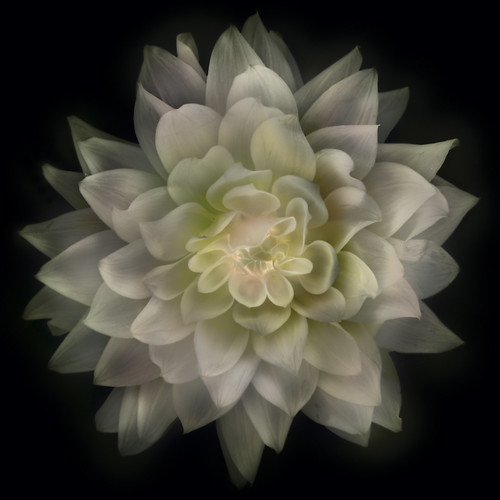
Ghost Flower, photo by Harold Davis. View this image larger.
The monochrome White Dahlia came from a color image. A high key color image, and one that didn’t have much in the way of contrasting colors. Which is what made it so ripe for black and white conversion.
I started back at the color image before black and white, which was itself a blended version of six captures. (Here’s the story.)
To create this version, I used duplicate images converted to LAB color, and hit with an Inversion or Equalization adjustment on a specific channel. I then copied the transformed version back over the original, blending in a variety of modes.
For example, using the Difference blending mode largely accounts for the soft, transparent look in some of the petals. (Minor technical note, you can’t use Difference blending in LAB color.)
The whole thing became a stack of 35 layers. Eeek! This process is explained in extremely gory detail in the major case study in the final part of The Photoshop Darkroom: Creative Digital Post-Processing.
Julian wandered past my computer at about this point, and I asked him what I should call the image. He suggested my title, “Ghost Flower.” What are kids for if they can’t give you good titles for your work? Just kidding.
This image has raised the question, “Is this a straight shot or a process?”
I get much the same query when I give workshops, often in the form, “Has this been Photoshopped or is it straight?”
Like Molly Bloom, my answer is always, “Yes.” I have no shame about using Photoshop, and it is integral to all my images, some more than others. The point of a photo like “Ghost Flower” is the way it looks and the emotions it arouses, not how it was made.
Full disclosure: Per the new F.T.C. regulations, I am using Photoshop CS4 for free courtesy of Adobe Software.